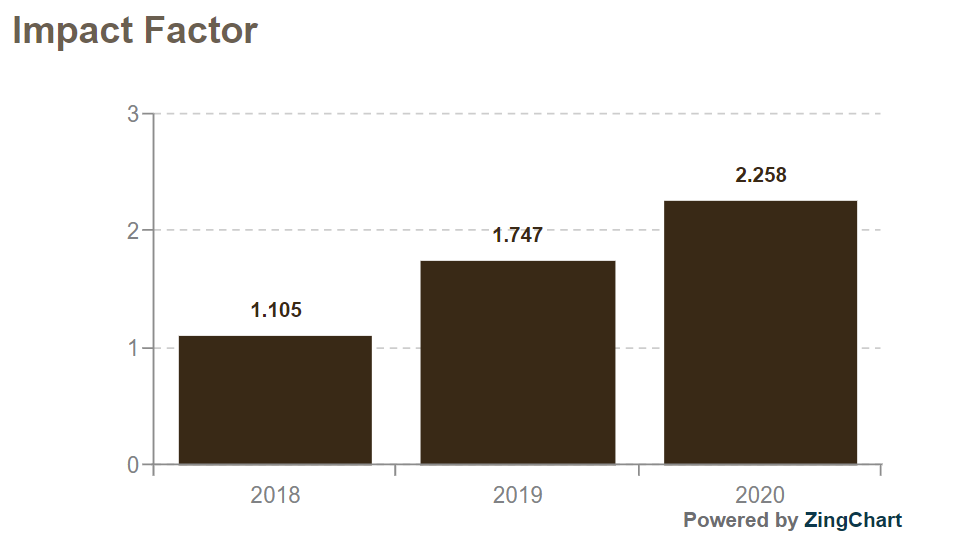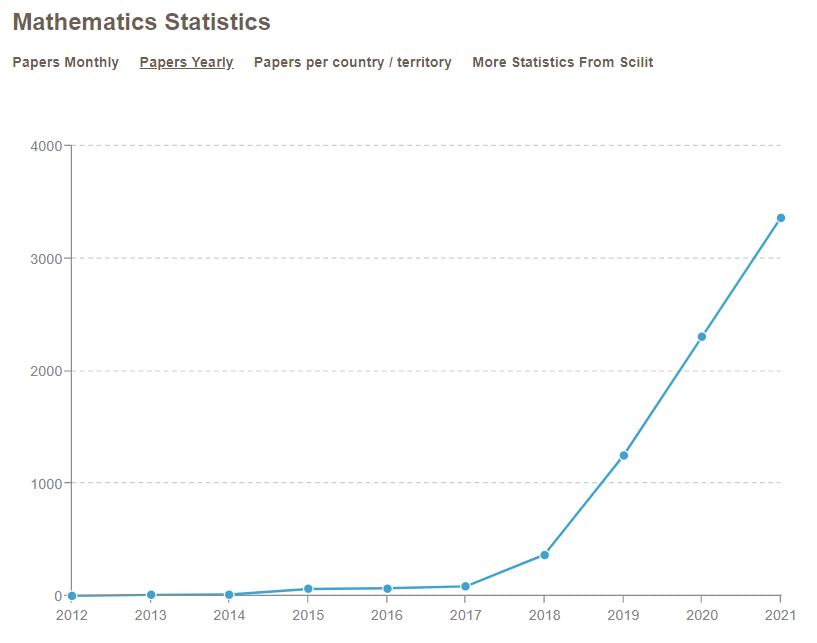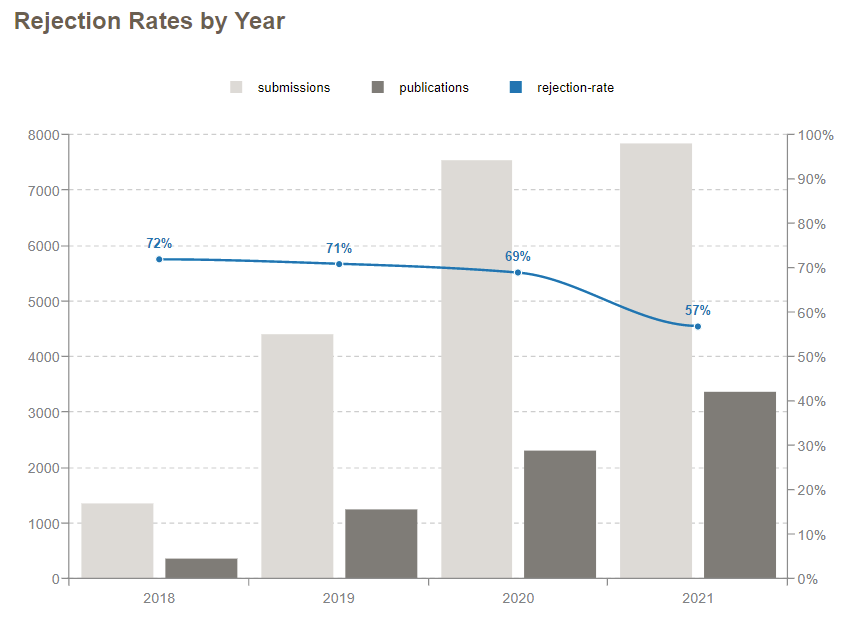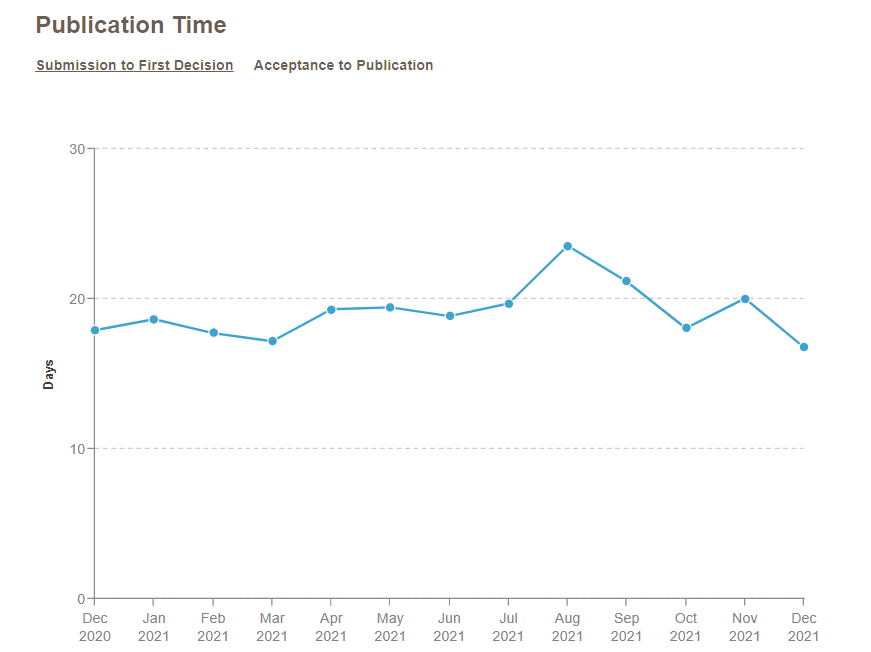Archive
The insidious corruption of open access publishers
The evil can be innovative. Highly innovative, in fact. It has to be, to survive. We wouldn’t even notice it otherwise. This is the lesson one repeatedly learns from foreign politics, where authoritarian or outright dictatorial regimes keeps coming up with new and ingenuous uses of technology to further corrupt and impoverish their own people. But this post is about Mathematics, the flagship MDPI journal.
What is MDPI?
It’s a for profit publisher of online-only “open access” journals. Are they legitimate or predatory? That’s a good question. The academic world is a little perplexed on this issue, although maybe they shouldn’t be. It’s hard for me to give a broad answer given that it publishes over 200 journals, most of which have single word wonder titles like Data, Diseases, Diversity, DNA, etc.
If “MDPI” doesn’t register, you probably haven’t checked your spam folder lately. I am pretty sure I got more emails inviting me to be a guest editor of various MDPI journals than from Nigerian princes. The invitations came in many fields (or are they?), from Sustainability to Symmetry, from Entropy to Axioms, etc. Over the years I even got some curious invites from such titles as Life and Languages. I can attest that at the time of this writing I am alive and can speak, which I suppose qualifies me to be guest editor of both..
I checked my UCLA account, and the first email from I got from MDPI was on Oct 5, 2009, inviting me to be guest editor in “Algorithms for Applied Mathematics” special issue of Algorithms. The most remarkable invitation came from a journal titled “J“, which may or may not have been inspired by the single letter characters in the James Bond series, or perhaps by the Will Smith character in Men in Black — we’ll never know. While the brevity is commendable, it serves the same purpose of creatively obscuring the subject in all these cases.
While I have nothing to say about all MDPI journals, let me leave you with some links to people who took MDPI seriously and decided to wade on the issue. Start with this 2012 Stack Exchange discussions on MDPI and move to this Reddit discussion from 3 months ago. Confused enough? Then read the following:
- Christos Petrou, MDPI’s Remarkable Growth, The Scholarly Kitchen (August 10, 2020)
- Dan Brockington, MDPI Journals: 2015-2020 (March 29, 2021)
- Paolo Crosetto, Is MDPI a predatory publisher? (April 12, 2021)
- Ángeles Oviedo-García, Journal citation reports and the definition of a predatory journal: The case of MDPI, Research Evaluation (2021). See also this response by MDPI.
As you can see, there are issues with MDPI, and I am probably the last person to comment on them. We’ll get back to this.
What is Mathematics?
It’s one of the MDPI journals. It was founded in 2013 and as of this writing published 7,610 articles. More importantly, it’s not reviewed by the MathSciNet and ZbMath. Ordinarily that’s all you need to know in deciding whether to submit there, but let’s look at the impact factor. The numbers differ depending on which version you take, but the relative picture is the same: it suggests that Mathematics is a top 5-10 journal. Say, this comprehensive list gives 2.258 for Mathematics vs. 2.403 for Duke, 2.200 for Amer. Jour. Math, 2.197 for JEMS, 1.688 for Advances Math, and 1.412 for Trans. AMS. Huh?
And look at this nice IF growth. Projected forward it will be #1 journal in the whole field, just what the name would suggest. Time to jump on the bandwagon! Clearly somebody very clever is managing the journal guiding it from obscurity to the top in just a few years…

Now, the Editorial Board has 11 “editors-in-chief” and 814 “editors”. Yes, you read the right — it’s 825 in total. Well, math is a broad subject, so what did you expect? For comparison, Trans. AMS has only about 25 people on its Editorial Board, so they can’t possibly cover all of mathematics, right? Uhm…
So, who are these people? I made an effort and read the whole list of these 825 chosen ones. At least two are well known and widely respected mathematicians, although neither lists being an editor of Mathematics on their extended CVs (I checked). Perhaps, ashamed of the association, but not ashamed enough to ask MDPI to take their name off the list? Really?
I also found three people in my area (understood very broadly) that I would consider serious professionals. One person is from my own university albeit from a different department. One person is a colleague and a friend (this post might change that). Several people are my “Facebook or LinkedIn friends” which means I never met them (who doesn’t have those?) That’s it! Slim pickings for someone who knows thousands of mathematicians…
This journal is popular, seriously?
Yes, it is. No doubt about it. Just look at this self-reported graph below. That’s a lot of papers, almost all of them in the past few years. For comparison, Trans. AMS publishes about 300 papers a year, while Jour. AMS in the past few years averaged about 25 papers a year.

The reasons for popularity are also transparent: they accept all kinds of nonsense.

To be fair, honest acceptance rates are hard to come by, so we really don’t know what happens to lower tier math journals. I remember when I came to be an editor of Discrete Math. it had the acceptance ratio of 30% which I considered outrageously high. I personally aimed for 10-15%. But I imagine that the acceptance ratio is non-monotone as a function of the “journal prestige” since there is a lot of self-selection happening at the time of submission.
Note that the reason for self-selection (when it comes to top journals) is the high cost of waiting for a decision which can often take upwards of a year. A couple of year-long rejections for a paper and its prospects are looking dim as other papers start appearing (including your own) which can prove stronger result by better/cleaner arguments. Now try explaining to the editor why your old weaker paper should be published in favor of all this new shining stuff…
This is yet another place where MDPI is innovative. They make a decision within days:

So the authors contemplating where to submit face a stark alternative: either their paper will be accepted with high probability within days, or — who knows… All these decisions are highly personal and dependent on particularities of author’s country, university, career stage, etc., but overall it’s hard to blame them for sending their work to Mathematics.
What makes MDPI special?
Mostly the way it makes money. It forgoes print subscription mode altogether, and has a 1800 CHF (about $1,960) “article processing charge” (APC). This is not unusual per se, e.g. Trans. AMS, Ser. B charges $2,750 APC while Forum of Mathematics, Sigma charges $1500 which is a deep discount from Cambridge’s “standard” $3,255 APC. What is unusual is the sheer volume of business MDPI makes from these charges essentially by selling air. They simply got ahead of competitors by being shameless. Indeed, why have high standards? That’s just missing out on so much revenue…
This journal is predatory, right?
Well, that’s what the MDPI link items 1-4 are about (see above). When it comes to Mathematics, I say No, at least not in a sense that’s traditionally understood. However, this doesn’t make it a legitimate research publication, not for a second! It blurs the lines, it corrupts the peer review, it leeches off academia, and it collects rents by selling air. Now that I made my views clear, let me explain it all.
What people seem to be hung up about is the idea that you can tell who is predatory by looking at the numbers. Number of submissions, number of citations, acceptance percentage, number of special issues, average article charge, etc. These numbers can never prove that MDPI does anything wrong. Otherwise MDPI wouldn’t be posting them for everyone to see.
Reading MDPI response in item 4. is especially useful. They make a good point — there is not good definition of a “predatory journal”, since the traditional “pay-to-play” definition simply doesn’t apply. Because when you look at the stats — Mathematics looks like a run-of-the-mill generic publication with high acceptance ratio, a huge number of ever corrupting special issues, and very high APC revenue. Phrased differently and exaggerating a bit, they are a mixture of Forum of Mathematics, Sigma or Trans. AMS, Ser. B. in being freely accessible, combined with the publication speed and efficiency of Science or Nature, but the selectivity of the arXiv (which does in fact reject some papers).
How do you tell they are illegitimate then?
Well, it’s the same logic as when judging life under an authoritarian regime. On paper, they all look the same, there is nothings to see. Indeed, for every electoral irregularity or local scandal they respond with what-about-your-elections. That’s how it goes, everybody knows.
Instead, what you do is ask real people to tell their stories. The shiny facade of the regime quickly fades away when one reads these testimonials. For life in the Soviet Union, I recommend The Gulag Archipelago and Boys in Zinc which bookend that sordid history.
So I did something similar and completely unscientific. I wrote to about twenty authors of Mathematics papers from the past two years, asking them to tell their stories, whether their papers were invited or contributed, and if they paid and how much. I knew none of them before writing, but over a half of the authors kindly responded with some very revealing testimonials which I will try to summarize below.
What exactly does the Mathematics do?
(1) They spam everyone who they consider “reputable” to be “guest editors” and run “special issues”. I wrote before how corrupt are those, but this is corruption on steroids. The editors are induced by waiving their APCs and by essentially anyone their choose. The editors seem to be given a budget to play with. In fact, I couldn’t find anyone whose paper was invited (or who was an editor) and paid anything, although I am sure there are many such people from universities whose libraries have budgeted for open source journals.
(2) They induce highly cited people to publish in their journal by waiving APCs. This is explicitly done in an effort to raise impact factors, and Mathematics uses h-index to formalize this. The idea seems to be that even a poor paper by a highly cited author will get many more citation than average, even if they are just self-citations. They are probably right on this. Curiously, one of my correspondents looked up my own h-index (33 as I just discovered), and apparently it passed the bar. So he quickly proposed to help me publish my own paper in some special issue he was special editing this month. Ugh…
(3) They spam junior researchers asking them to submit to their numerous special issues, and in return to accept their publishing model. They are asked to submit by nearly guaranteeing high rates of processing and quick timeline. Publish or perish, etc.
(4) They keep up with appearances and do send each paper to referees, usually multiple referees, but requiring them to respond in two weeks. The paper avoids being carefully refereed and that allows a quick turnaround. Furthermore, the refereeing assignments are made more or less at random to people in their database completely unfamiliar with the subject. They don’t need to be, of course, all they need is to provide a superficial opinion. From what I hear, when the referee recommends rejection the journal doesn’t object — there is plenty of fish in the sea…
(5) Perhaps surprisingly, several people expressed great satisfaction with the way refereeing was done. I attribute this to superficial nature of the reports and the survivor bias. Indeed, nobody likes technical reports which make you deal with proof details, and all the people I emailed had their papers accepted (I wouldn’t know the names of people whose papers were rejected).
(6) The potential referees are induced to accept the assignment by providing 100 CHF vouchers which can be redeemed at any MDPI publication. Put crudely, they are asked to accept many refereeing assignments, say Y/N at random, and you can quickly publish your own paper (as long as it’s not a complete garbage). One of my correspondents wrote that he exchanged six vouchers worth 600 CHF onto one APC worth 1600 CHF at the time. He meant that this was a good deal as the journal waived the rest, but from what I heard others got the same or similar deal.
(7) Everyone else who has a university library willing to pay APC is invited to submit for the same reasons as (4). And people do contribute. Happily, in fact. Why wouldn’t they — it’s not their money and they get to have a quick publication in a journal with high IF. Many of my correspondents reported to be so happy, they later published several other papers in various MDPI journals.
(8) According to my correspondents, other than the uncertain reputation, the main problem people faced was typesetting, especially when it came to references. Mathematics is clearly very big on that, it’s why they succeeded to begin with. One author reported that the journal made them write a sentence
The first part of the bibliography […], numbered in chronological order from [1,2,3,4,5,6,7,8,9,10,11,12,13,14,15,16,17,18,19,20,21,22,23,24,25,26,27,28,29,30,31,32,33,34,35,36,37,38,39,40,41,42,43,44,45,46,47,48,49,50,51,52,53,54,55,56,57,58,59,60,61,62,63,64,65,66,67,68,69,70,71,72,73,74,75,76,77,78,79,80,81,82,83,84,85,86,87,88,89,90,91,92,93,94,95,96,97,98,99,100,….]
Several others reported long battles with the bibliography style to the point of threatening to withdraw the paper, at which point the journal cave all reported. But all in all, there were unusually few complaints other than on a follow up flood of random referee invitations.
(9) To conclude, the general impression of authors seem to be crystalized in the following quote by one of them:
I think what happened is MDPI just puts out a ton of journals and is clearly just interested in profiting from them (as all publishers are, in a sense…) and some of their particular journals have become more established and reputed than others, some seem so obscure I think they really are just predatory, but others have risen above that, and Mathematics is somewhere in the middle of that spectrum.
What gives?
As I mentioned before, in my opinion Mathematics is not predatory. Rather, it’s parasitic. Predatory journals take people’s own cash to “publish” their paper in some random bogus online depositary. The authors are duped out of cash with the promise of a plausibly looking claim of scientific recognition which they can use for their own advancement. On the other hand, Mathematics does nothing nothing other journals don’t do, and the authors seem to be happy with the outcome.
The losers are the granting foundations and university libraries which shell out large amounts for a subpar products (compared to Trans. AMS, Ser B., Forum Math Sigma, etc.) as they can’t tell the difference between these journals, or institutionally not allowed to do so. In the spirit of “road to hell is paved with good intentions“, this is an unintended consequence of the Elsevier boycott which brought the money considerations out of the shadows and directly led to founding of the open access journals with their misguided budget model.
MDPI clearly found a niche allowing them to monetize on mediocre papers while claiming high impact factors from a minority of papers by serious researchers. In essence it’s the same scam as top journals are playing with invited issues (see my old blog post again), but in reverse — here the invited issues are pushing the average quality of the journal UP rather than DOWN.
As I see it, Mathematics corrupts the whole peer review process by monetizing it to the point that APC becomes a primary consideration rather than the mathematical contribution of the paper. In contrast with the Elsevier, the harm MDPI does is on an intangible level — the full extend of it might never become clear as just about all papers the Mathematics publishes will never be brought to public scrutiny (the same is true for most low-tier journal). All I know is that the money universities spend on Mathematics APCs are better be spent on just about anything else supporting actual research and education.
What happens to math journal in the future?
I already tried answering this eight years ago, with a mixed success. MDPI shows that I was right about moving to online model and non-geographical titles, but wrong about thinking that journals will further specialize. Journals like Mathematics, Algorithms, Symmetry, etc. are clear counterexamples. I guess I was much too optimistic about the future without thinking through the corrupt nature the money brings to the system.
So what now? I think the answer is clear, at least in Mathematics. The libraries should stop paying for open access. Granting agencies should prohibit grants be used for paying for publications. Mathematicians should simply run away any time someone brings up the money. JUST SAY NO.
If this means that journals like Forum Math. would have to die or get converted to another model — so be it. The right model of arXiv overlay is cheap and accessible. There is absolutely no need for a library to pay for Trans. AMS, Ser. B. publication if the paper is already freely available on the arXiv, as is the fact with the vast majority of their papers. It’s hard to defend giving money to Cambridge Univ. Press or AMS, but giving it to MDPI is just sinful.
Finally, if you are on the Mathematics editorial board, please resign and never tell anyone that you were there. You already got what you wanted, your paper is published, your name is on the cover of some special issue (they print them for the authors). I might be overly optimistic again, but when it comes to MDPI, shame might actually work…
Recent Posts
Archives
- April 2024
- September 2023
- April 2023
- December 2022
- October 2022
- September 2022
- June 2022
- February 2022
- January 2022
- August 2021
- July 2021
- June 2021
- May 2021
- April 2021
- March 2021
- February 2021
- December 2020
- October 2020
- April 2019
- March 2019
- September 2018
- March 2018
- July 2017
- May 2017
- November 2016
- September 2016
- May 2015
- November 2014
- September 2014
- February 2014
- December 2013
- November 2013
- June 2013
- May 2013
- February 2013
- December 2012
- October 2012
- September 2012
- August 2012
- July 2012
- March 2012
Categories
- Academic dishonesty
- Academic life
- Advice
- Antisemitism
- Asymptotic Group Theory
- Awards
- College Admissions
- Combinatorial inequalities
- Combinatorics
- Discrete Geometry
- Employment
- English
- Enumerative Combinatorics
- Geometric inequalities
- Graduate Schools
- History of mathematics
- humor
- Journals
- Math writing
- Mathematicians
- Mathematics
- Mathematics Journals
- Mathematics Publishers
- Mathematics videos
- New papers
- Philosophy of Mathematics
- polygon triangulations
- power of negative thinking
- predictions
- Uncategorized
- Undergraduate education
- University administration
You must be logged in to post a comment.